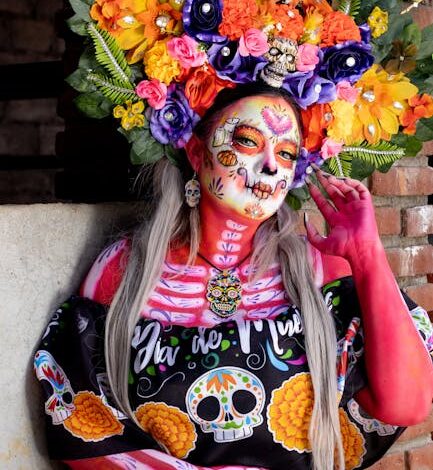The Evolution of Design: Why AI is the Next Frontier

In the ever-evolving landscape of digital design, there are moments that feel less like incremental updates and more like seismic shifts. Moments that make you pause, consider the implications, and perhaps even crack a subtle smile at the sheer ingenuity of it all. One such moment recently arrived with the news that Figma, the undisputed champion of collaborative design, has acquired Weavy, an AI-powered media generation company. If you’re a designer, a product manager, or anyone remotely connected to the creative industries, this headline likely sparked a mix of curiosity and anticipation. What does one of the most powerful design platforms in the world want with an AI that generates media? The answer, I believe, lies in a future where design isn’t just about pixels and prototypes, but about intelligent, dynamic content creation.
The Evolution of Design: Why AI is the Next Frontier
For years, Figma has been synonymous with democratizing design. It broke down barriers, allowing teams to collaborate seamlessly in real-time, regardless of location or operating system. It became the central hub for countless creative workflows, moving beyond just UI/UX to encompass whiteboard ideation with FigJam and even web development through various plugins. But as powerful as Figma is, the process of creating the actual *content* – the images, illustrations, and multimedia assets that populate those designs – has largely remained a manual, often time-consuming endeavor. This is where AI steps in, and specifically, where Weavy becomes a game-changer.
Think about the modern design challenge. It’s not just about crafting a beautiful interface; it’s about populating that interface with compelling, relevant, and diverse media. Marketing campaigns demand endless variations of visuals. Product interfaces need realistic placeholder images that convey the user experience without generic stock photos. Personalization at scale requires adaptable content. Manual creation simply can’t keep up with the demand, nor can it provide the speed and iterative power that today’s fast-paced product development cycles require.
From Static Assets to Dynamic Generation
Generative AI, in particular, has exploded onto the scene, demonstrating its incredible potential to create everything from photorealistic images to complex illustrations from simple text prompts. Companies like Midjourney, DALL-E, and Stable Diffusion have shown us a glimpse of what’s possible. It’s a fundamental shift from designers *making* every asset to designers *directing* AI to generate assets. This isn’t about replacing creativity; it’s about amplifying it, freeing designers from repetitive tasks to focus on higher-level strategic thinking and refinement.
Weavy’s Role in Figma’s Grand Vision
So, what exactly does Weavy bring to the Figma ecosystem? While the specific details of their AI generation capabilities haven’t been exhaustively publicized, the general understanding is that Weavy specializes in AI-powered media generation. This means generating images, perhaps even short video clips or other multimedia elements, using artificial intelligence. It’s the kind of technology that can transform a designer’s workflow, allowing them to iterate on visual concepts at lightning speed, create diverse sets of assets for A/B testing, or populate complex mockups with realistic, context-aware media.
Figma’s official statement provides a crucial clue: Weavy will exist as a standalone product for now. This is a smart move. It allows Weavy to continue developing its core technology and serving its existing user base without immediately being constrained by the broader Figma platform. It also gives Figma the time to understand Weavy’s capabilities deeply, identify the most impactful integration points, and ensure a seamless, non-disruptive transition for both sets of users.
The Promise of Integration: Figma Weave and Beyond
The long-term vision, however, is where the real excitement lies. Figma explicitly stated that Weavy will eventually be integrated with the “Figma Weave brand, along with the rest of the Figma platform.” The “Figma Weave” brand itself is intriguing, hinting at a new suite of tools or a paradigm shift in how Figma handles complex, interconnected workflows. Imagine designing a new landing page in Figma, and with a few clicks, or even a natural language prompt, instantly generating a dozen variations of hero images, complete with diverse models, settings, and stylistic treatments, all without ever leaving your design file.
This integration could manifest in countless ways. Perhaps Weavy’s AI will power an intelligent plugin within Figma, allowing designers to generate specific assets directly on their canvas. It might offer advanced content generation for FigJam sessions, turning brainstormed concepts into visual prototypes in real-time. Or it could be a background engine, intelligently suggesting or generating media assets based on the context of your design, your brand guidelines, or even user data.
The Future of Creative Workflows: Co-Creation with AI
This acquisition isn’t just about adding a new feature to Figma; it’s a profound statement about the future of creative work. It signals Figma’s commitment to pushing the boundaries of what a design tool can be, moving it beyond a canvas and into a true co-creation partner. The era of designers solely *creating* everything is slowly giving way to an era where designers *orchestrate* and *curate*, leveraging powerful AI tools to bring their visions to life more efficiently and expansively than ever before.
Of course, this transformation comes with its own set of questions. How will designers adapt their skills? What are the ethical considerations around AI-generated media, particularly concerning originality, bias, and deepfakes? These are critical conversations that the industry, and platforms like Figma, will need to navigate carefully. But the overall trajectory is clear: AI is not merely a helper; it’s becoming an integral part of the creative process itself.
Ultimately, Figma acquiring Weavy is more than just a business deal; it’s a bold step towards a future where design tools are not just static canvases but dynamic, intelligent partners. It promises to unlock new levels of creativity, accelerate iteration cycles, and empower designers to focus on the strategic, human-centric aspects of their craft. As Weavy’s capabilities get woven into the fabric of Figma, we’re likely to see a new paradigm emerge – one where the line between ideation and asset creation blurs, and the speed of imagination truly meets the speed of execution. It’s an exciting time to be a designer, poised on the brink of a new era of intelligent creativity.





